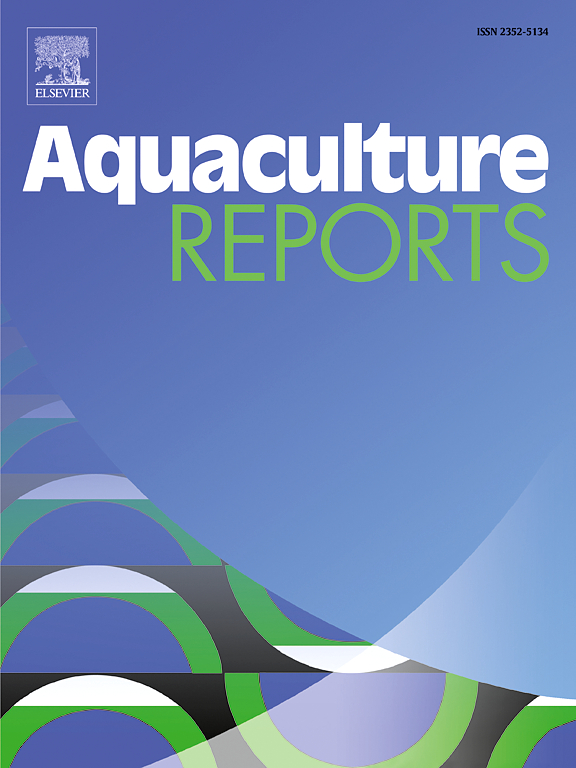Application of a dynamic energy budget model to the blood clam, Tegillarca granosa, reared in culture pond
IF 3.2
2区 农林科学
Q1 FISHERIES
引用次数: 0
Abstract
Dynamic Energy Budget (DEB) theory seeks to quantify the energetic framework of individual organisms through a dynamic model that encompasses food uptake and its subsequent utilization in metabolic processes. This paper aims to extend the existing DEB model for Tegillarca granosa in pond culture. The model is influenced by water temperature and food density, which serve as key forcing variables throughout larval development. We calculated DEB parameter values for larvae through laboratory experiments specifically designed to gather datasets on ingestion and growth under varying phytoplankton densities and temperatures. Sensitivity analysis indicated that Arrhenius temperature (TA) exerted the most significant impact on growth, with a 10 % increase in TA resulting in an 11.6 % increase in dry tissue weight. Insufficient energy allocated to storage during January and February hindered the growth of T. granosa, leading to reduced dry tissue weight, structural damage, and decreased survival rates during winter. This study provides theoretical insights into assessing the carrying capacity and implementing scientifically informed aquaculture management practices for T. granosa in pond systems.
求助全文
约1分钟内获得全文
求助全文
来源期刊

Aquaculture Reports
Agricultural and Biological Sciences-Animal Science and Zoology
CiteScore
5.90
自引率
8.10%
发文量
469
审稿时长
77 days
期刊介绍:
Aquaculture Reports will publish original research papers and reviews documenting outstanding science with a regional context and focus, answering the need for high quality information on novel species, systems and regions in emerging areas of aquaculture research and development, such as integrated multi-trophic aquaculture, urban aquaculture, ornamental, unfed aquaculture, offshore aquaculture and others. Papers having industry research as priority and encompassing product development research or current industry practice are encouraged.
 求助内容:
求助内容: 应助结果提醒方式:
应助结果提醒方式:


